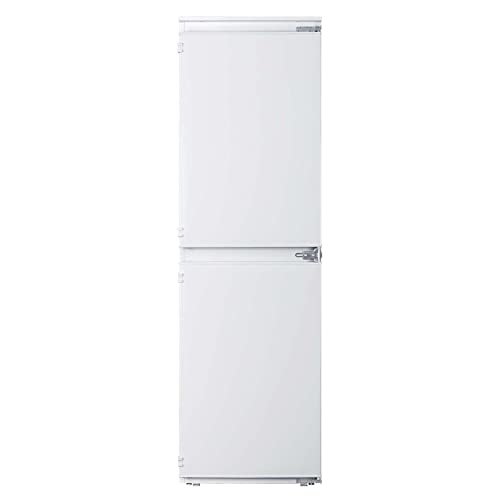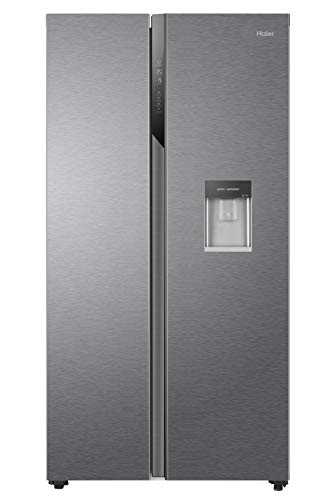این شرکت آگهی شغل فعال ندارد
0 دیدگاه
به این کمپانی امتیاز دهید (هنوز دیدگاهی ندارد)
درباره ما
Why Everyone Is Talking About Fridges And Freezers Right Now

Understanding Fridges and Freezers: The Essential Kitchen Appliances
Refrigerators and freezers are two of the most necessary home appliances in contemporary kitchen areas. These home appliances serve a vital role in food preservation and waste decrease by guaranteeing that perishable products stay fresh and safe for usage. This article explores the different kinds of fridges and freezers, their functionalities, and crucial factors to consider for selection and upkeep.
Kinds of Refrigerators
The market uses a range of refrigerator types, each created to meet various customer requirements. Below is a list of the most typical kinds of fridges:
-
Top-Freezer Refrigerators
- Most typical type.
- Freezer compartment lies above the refrigerator area.
- Typically more budget-friendly and energy-efficient.
-
Bottom-Freezer Refrigerators
- Freezer is situated at the bottom.
- Permits much easier access to fresh items at eye level.
- Frequently includes pull-out drawers for better organization.
-
Side-by-Side Refrigerators
- Refrigerator and freezer sections are nearby.
- Perfect for narrow kitchens and allows simple access to both compartments.
- Often comes with water and ice dispensers.
-
French Door Refrigerators
- Combines a bottom freezer with double doors at the top.
- Offers sufficient storage and trendy designs.
- Frequently consists of features like temperature-controlled drawers.
-
Compact Refrigerators
- Smaller size suitable for minimal areas.
- Commonly utilized in dormitory, studio apartments, or as secondary fridges.
Table 1: Comparison of Refrigerator Types
| Type | Benefits | Disadvantages | Typical Size |
|---|---|---|---|
| Top-Freezer | Cost effective, energy-efficient | Less practical access to the freezer | 14-30 cu. ft. |
| Bottom-Freezer | Simpler access to fresh food | Freezer can be harder to organize | 19-30 cu. ft. |
| Side-by-Side | Easy gain access to, water/ice dispenser | Narrow vs. storage area | 22-30 cu. ft. |
| French Door | Elegant, large, arranged | More expensive | 20-30+ cu. ft. |
| Compact | Space-saving, portable | Restricted storage | 1.7-5.5 cu. ft. |
Types of Freezers
Freezers are an equally essential appliance for food conservation. They come in different designs designed to fit various home requirements. Consider the following types:
-
Upright Freezers
- Run like a basic refrigerator with vertical storage.
- Easier to arrange with racks and compartments.
-
Chest Freezers

- Large, horizontal style generally providing more storage area.
- Maintains temperatures much better throughout power failures.
- More energy-efficient than upright models.
-
Portable Freezers
- Compact units perfect for outdoor activities or small areas.
- Typically utilized for camping journeys or as temporary storage.
Table 2: Comparison of Freezer Types
| Type | Benefits | Drawbacks | Common Size |
|---|---|---|---|
| Upright Freezer | Easier to arrange | Less energy-efficient, more floor area | 5-20 cu. ft. |
| Chest Freezer | Holds more items, energy-efficient | Harder to organize | 5-25 cu. ft. |
| Portable Freezer | Compact and versatile | Limited storage capacity | 1-10 cu. ft. |
Key Features to Consider
When picking a fridge or freezer, consumers need to remember a number of functions that can boost functionality:
- Energy Efficiency: Look for models with the ENERGY STAR accreditation to save money on electrical power expenses.
- Storage Capacity: Evaluate storage requirements based on household size and eating habits.
- Temperature Control: Some home appliances use digital controls for precise temperature level settings.
- Adjustable Shelving: Customizable shelving allows for optimum company.
- Water and Ice Dispenser: Offers convenience however can take up valuable space inside.
- Sound Level: Sound ratings can influence convenience, especially in open-concept homes.
Advantages and disadvantages of Having a Fridge and Freezer
While fridges and freezers are indispensable innovations, they also have particular benefits and drawbacks:
| Pros | Cons |
|---|---|
| Maintain food lifespan and lower waste | Need regular maintenance |
| Permit bulk purchasing and meal prepping | Can be costly to acquire and run |
| Offer convenience and fast access to food | Occupy considerable kitchen area |
Maintenance Tips
To make sure durability and ideal performance of fridges and freezers, think about the following maintenance suggestions:
- Regular Cleaning: Clean the interior and outside occasionally to prevent buildup of dirt and bacteria.
- Examine Seals: Inspect door seals routinely for leakages to preserve performance.
- Temperature level Settings: Keep the uk fridge Freezer at 34-38 ° F and the freezer at 0 ° F for optimum food preservation.
- Defrost as Needed: Chest freezers ought to be thawed regularly to maintain effectiveness.
- Clear Air Vents: Ensure that air flow isn’t obstructed to enhance energy effectiveness.
FAQs About Fridges and Freezers
Q1: How long can food be saved in a freezer?A: Most foods can be kept in a freezer for several months. Meats and poultry frequently last 4-12 months, while veggies can last up to 8-12 months.
Q2: How typically need to I clean my fridge and freezer?A: It is recommended to clean your fridge and freezer every 3 to 6 months, or as required when spills take place. Q3: Can I put hot food straight in the fridge?A: It is advised to cool hot food to room temperature before placing it in the fridge to avoid
raising the temperature level inside the home appliance. Q4: Why is my fridge running constantly?A: This could be due to a malfunctioning thermostat, stopped up coils, or door seals that aren’t working correctly. Fridges and freezers are vital
assets to modern-day families, offering necessary services for food storage and conservation.
Comprehending the numerous types, features, and maintenance requirements can assist customers choose the best devices for their needs and optimize their performance. Embracing energy-efficient models not just supports sustainable practices however likewise adds to significant savings on utility expenses, making informed options more crucial than ever.



